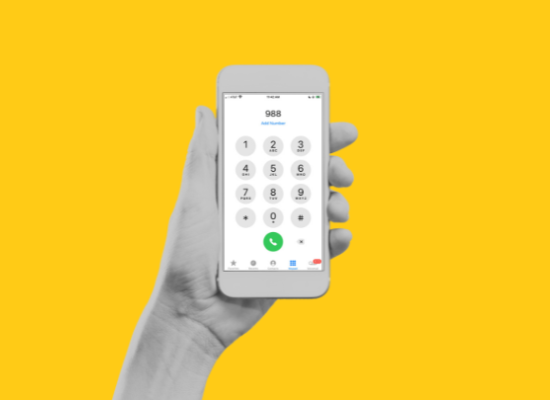
Sue leads the Zero Suicide Institute of Australasia.
Imagine your first appointment as a psychiatrist is in a high-security prison mental health ward. As if that is not daunting enough, add to it the challenge of caring for people who are not in the prison system but cannot be managed in a closed acute ward and are admitted to the prison mental health ward under your care.
This is how Dr. Elnathan Prinsen began his career in the Netherlands. It is also what prompted him to explore the concept of Intensive Home Treatment (IHT). Dr. Prinsen explained, “that experience made me question what we were doing. Is this the right way? What if a person’s journey was more personalised? Would that make a difference?
“My observation was that almost every person with whom we were working had broken relationships with doctors. So I thought that if we shifted the focus to the person, rather than the healthcare professionals and system, we would have better outcomes.
“When I left the prison system, I certainly experienced a sense of freedom, and I was there in a professional capacity. What must it have been like for those who were not incarcerated but were sharing the mental health ward with people who were prisoners? I wanted to do something that could avoid coercive hospital admission. And this was the genesis of the Intensive Home Treatment approach,” said Dr. Prinsen.
Intensive Home Treatment reduces coercive hospital admissions
The Netherlands has a long history of outpatient crisis care, but the only choice for those needing crisis care was either admission to an inpatient facility or outpatient services. There was nothing in-between. It is quite common for people to need more intensive support in the first week of a crisis than is available through weekly outpatient visits, but not so deep as to need to be admitted to inpatient care. IHT offers an alternative service that fills this gap in the system.
IHT is served by a multidisciplinary team that conducts the crisis assessment and delivers intensive home treatment. The team has about 20 professionals, including psychiatrists, psychiatric nurses, social psychiatric nurses—a specialty role for a psychiatric nurse—social workers who engage with employment and housing services, psychologists who provide access to psychotherapy, lived experience members, and family therapists.
Therapy may be as intensive as three visits in one day if required. Generally, the need for such intensive support abates after one week, and during the second week, the team may be visiting once a day or even down to three times during the week, thereby avoiding hospital care and achieving better results for the person. The team also works with the family to upskill them to be able to manage and support the person at home.
Today, Dr. Prinsen is President of the Dutch Association of Psychiatry and a member of a government task force to increase patient participation in healthcare. “As with many countries, there has been a general desire across the Netherlands to avoid coercive measures, and the best way to avoid this is to not have to admit patients at all.”
Context is a critical component of managing mental health crises, and enabling people to remain in a familiar context can have significant benefits. “IHT accepts that a psychiatric crisis cannot be managed on symptoms alone and is best managed in the context of the patient. IHT offers treatment in the context of the person and in their home environment with better outcomes because the treatment and family support is delivered in their system.”
The team has also found that it is not always the patient who experiences a crisis. Sometimes, the GP, the family, or the support network may require support, and the IHT team can respond appropriately.
“Importantly, power balances are reversed when treatment is provided in the home. Before we established IHT, a person with serious psychiatric illness would most likely have experienced a coercive hospital admission. By working in their system [their home], we have better access to engage the person in treatment, and their support network can work collaboratively with the team to contribute to recovery,” Dr. Prinsen explained.
Shared decision-making – an important principle
It is well documented that transition periods are very risky, both from home to admission and vice versa. A person can lose all hope when in an acute ward, so there is risk associated with admission. Most times, the family has better capacity to watch a person than staff in an acute clinic where it is unlikely that observation is possible 24/7, while at home, this may be possible. “That may not always be healthy, but in such circumstances, the team will discuss what is necessary. While management of danger to self and others is a consideration that governs admission decisions, I strongly believe suicidal danger can be managed at home,” said Dr. Prinsen.
The decision to use IHT or be admitted to hospital is the responsibility of the psychiatrist. However, Dr. Prinsen said, with IHT, shared decision-making is an important principle. The IHT team assesses the situation—both to determine if the problem is a psychiatric disorder and if the family is confident to work with the team or if there are concerns at their capability. If admission is required, the aim is to make it as short as possible, and during that admission period, the IHT team works with the family to prepare them for when the person returns home.
When there is an admission, the IHT team attends all inpatient meetings to determine what is needed for the person to go home. There is always a concerted effort to get an early discharge, but this will depend on family readiness and the person and their progress. The IHT team prefers the hospital to discharge the person as soon as the family is ready to support them. Dr. Prinsen conceded that this is not always easy as some treating health professionals, who have been working in inpatient services for a long time, will only allow a person to go home when they determine that contact once per week will be sufficient for the person. However, the value of the IHT team is that they have all disciplines available to provide treatment, and they can visit more frequently, so the person does not have to be at an optimal stage.
Enhanced satisfaction for all involved in Intensive Home Treatment
Individuals and families have choices
For the person and the family, satisfaction with treatment and management of the crisis is higher because the family is better educated and actively involved in treatment.
For new patients, the IHT team will conduct crisis assessments and start IHT ahead of transition to the outpatient care team. This reduces the pressure on the outpatient care team and the health system. For those already in the healthcare system, the IHT team does home visits with a psychiatric nurse and social psychiatric nurse, with the aim being to upskill the family and the outpatient care team. If hospital admission is necessary, the IHT team will assist the transfer both in and out of the system and again at the home once the transition has been made.
Another benefit of having the IHT team involved is that they make sure any follow-up requirements are met. “We operate on two key principles,” Dr. Prinsen explained. “The maximum support for IHT is six weeks. But …. we only stop when other care has started.
“For two weeks, we walk next to the patient and the family or the person’s support network to help them navigate the system, which may be the health system or it may be a social system. After this two-week period, the person can still call the IHT team 24/7 for another two weeks. If outpatient care is needed, the IHT team can arrange this for them.
Access to the IHT team by phone was not part of the original model; it was added when the person and the family were concerned about their ongoing ability to manage the situation should another crisis arise. However, when phone access was added, there was not the increase in calls that might have been expected because simply knowing the service was available provided a safety net, which in reality is not often used.
“The biggest win is that the person has choices, and transfers in care are far better managed because the gap between inpatient and outpatient is filled,” said Dr. Prinsen.
Health professionals and emergency services get onboard
As with any new initiative designing and implementing IHT was a challenge. It is accepted now, but there was resistance initially. Who would decide on admission for a person? Outpatient team? Inpatient team? The IHT team? Ultimately, the person and their family or support network should make the decision. However, to remove any doubt, the decision was made that no person could be admitted into care without involving the IHT team. In effect, they play a gatekeeper role because they sit with the inpatient and outpatient teams and together determine the course of treatment. Filling this gap has meant better collaboration between health professionals in both the inpatient setting and the outpatient settings as the IHT team works with both.
Evidence shows that a person who has previously been admitted to hospital has a greater chance of further admission. Someone who has experienced forced admission also has a greater likelihood of repeated psychiatric crises. “We do not have hard evidence that IHT can reduce the number of times a person experiences a crisis. However, as a psychiatrist, I really believe that when your first case of psychotic crisis results in a person not needing inpatient care, it can have a profound and positive effect on your career and the future decisions you make about treatment,” said Dr. Prinsen.
To access the service, the IHT team must be invited to come to the home. While GPs are the most frequent referral system, there are times when the police will call the team to a person’s house. It is a major challenge then for the IHT team to convince the police not to take the person away from the home. “One of the psychiatric nurses from the IHT team is attached to the police to do “street triage,” which has reduced emergency calls. What it also means is that if the police are called, the IHT team member can commence treatment immediately, so options for responses to the person’s crisis are much better,” explained Dr. Prinsen.
Dr. Prinsen and his teams are working on greater participation by the individuals and family members in the discussions about treatment pathways. “The challenge is not only getting the time for professionals from both inpatient and outpatient services together but also making sure that the agenda of one group does not override the agenda of the other. It is desirable to involve the family in the long term, and we certainly need to do more work on this,” he said
Expanding Intensive Home Treatment Options
The region in which Dr. Prinsen works has a population of 350,000 people serviced by one IHT team with an average caseload of 40 families. About 10 of those are under very intensive treatment. The maximum period is usually six weeks, but sometimes, this can be longer and other times quicker to resolve. Half of the people are new cases not in mental healthcare when assessed, and half in mental health care through outpatient services.
While the tyranny of distance is not as common a challenge in the Netherlands as it is in Australia, the US, and Canada, the IHT team does use technology, but it is more often the phone than online responses as the latter can be difficult for a person in crisis to navigate. The phone is not considered a replacement for IHT. Instead, it is a stop-gap measure. With the intensity of treatment, it is more challenging to manage when distance is involved. Generally, if a person is in a rural area, the chance that admission will be needed is higher than for someone living close to services.
Dr. Prinsen explained, “we can visit a person once a day with a planned route, and twice a day is possible, but if visits are needed three times a day, then admission will be required,” said Dr. Prinsen.
“We have an additional service for those living away from the city, which is access to the daycare centre. This provides treatment options that blend home visits with a stay at the daycare centre. The centre is located in the same building as the inpatient services but has a very different environment. It is more homely with relaxation areas and separate rooms. Notably, the same nurses that visit the person at home also work with them at the daycare centre.
Health system and economic benefits
While home treatment is more expensive, the IHT approach has reduced the need for inpatient beds, so those costs are reduced, allowing for a re-allocation of the existing resources to the IHT services. Often, a person may have been on a waiting list for treatment, and the IHT team has resolved the crisis. This is because there is the full discipline in the team, and they have the freedom to make treatment decisions based on what will best serve the needs of the person and their family or support network.
Observing the IHT team outcomes, and the benefits for the person and their support network, has built confidence in the approach among health professionals and contributed to reducing coercive hospital admissions. Because it is working well—patients and families want IHT as an option because staying home is definitely the preferred choice—this has also impacted many health professional’s decisions regarding treatment. This acceptance is further reflected in the growth rate of IHT in the Netherlands, with Dr. Prinsen and his team now called upon to assess other teams. There are currently more than 50 teams delivering IHT across the country.
Its success is further exemplified by research on a national level which showed that, between 2015 and 2020, the rates of coercive admissions in Dr. Prinsen’s region went down while the rates went up in other regions across the nation. “Of course, the ultimate benefit is the increase in satisfaction—for both the person in care and the family—and the improvement in their outcomes,” said Dr. Prinsen.








